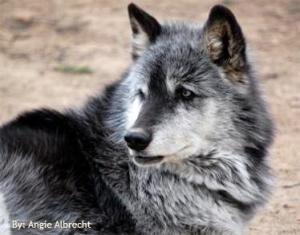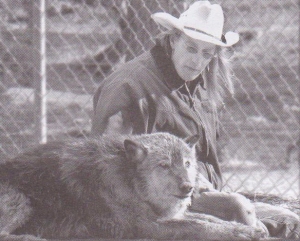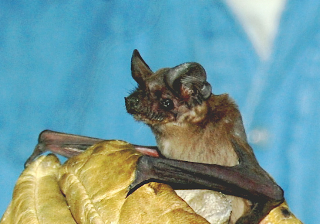
Bat photos provided by Michelle McCaulley, Rio Grande
Basin Bat Project, all rights reserved.
There is a cycle in our community that has to do with the seasons at dusk. It begins when our Rio Grande Valley evenings start to warm in spring, pulling us out onto the patio. We look into the purple-orange sky and notice a black flicker here, another there, appearing in herky-jerky fashion. By fall, the air becomes dewy and cool at sunset, and the dancing black flashes are few until finally, they’re gone. This is the coming and going of bats.
Yes, bats. Mice with wings. Strange little critters that frighten some but delight many, including us. They live—or, perhaps the proper term is hang out—on our (ybonesy’s) property in two bat houses that sit on long poles out on the grounds, a sort of summer residence for bats.
Maybe it’s the season, or perhaps fueled by a desire to not take our bat companions for granted, we decided to learn more about these amazing flying mammals. We sent our questions to bat guru Michelle McCaulley, director of the bat program that set up our bat houses and many more like them. Michelle shed light on these nocturnal creatures.


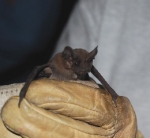
Fifteen Questions with Michelle McCaulley
Q. You have a pretty unconventional job; can you describe your role as it pertains to bats in the community?
A. I see myself as a biologist—that is actually what my degree is in—and an educator and conservationist, not only when it comes to bats in my community but other animals as well.
Q. How did you get involved in this program?
A. My father, Jim McCaulley, had started the Corrales Bat Habitat Program, installing 30 houses with a small grant from US Fish & Wildlife Service (USFWS) Partners Program in 2002. When he passed away in 2005, I was thrilled and honored to continue with this mission. It was also a chance to do what I love, which is to study animals—in this case, bats.
Q. How long has the program been in existence, and how has it been received in the community?
A. The Corrales Bat Habitat Program began in 2002 with 30 houses. In 2006, the name was changed to Rio Grande Basin Bat Project, and it became a non-profit 501 (3)(c) tax-exempt organization. To date there are over 60 sponsored bat houses, primarily in the Village of Corrales but also around the rest of New Mexico. The Village of Corrales passed a resolution about eight years ago in support of the program. Residents have been enthusiastic and very supportive ever since. I usually have a waiting list of willing sponsors who would like to enroll in the Rio Grande Basin Bat Habitat Expansion Program.
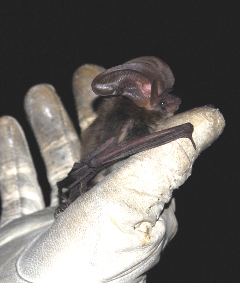
Q. Bats are extremely beneficial, which is, I assume, large part of why this program exists. Can you expand on the benefits of bats in a community?
A. Not only do bats consume half of their body weight a night eating insects, they are primary pollinators of some plants. If you like tequila, thank a bat. Bats pollinate the agave from which tequila is derived. Bats are also a good biological indicator for healthy communities. Spraying of insecticides and pesticides is very harmful to bats because the chemicals are stored in a bat’s fat reserves, which could affect how well that bat survives the winter to live another year. The bats that live in NM are insectivorous bats meaning they only eat insects.
Q. We understand that bat season is winding down. What exactly do bats do as the weather gets cooler?
A. There is not a lot known about exactly when and where bats go for winter. We know migrating birds follow the same route each winter and back each summer, but this is not clear for bats. Many species of bats take up winter residence in caves, some in trees and rock crevices. For our bats in Corrales, they could be wintering as close as the Sandia Mountains. They hibernate like many other mammal species, and the weight they have gained in the summer sustains them through the winter. If disturbed during hibernation, bats use more energy and may not have enough reserves to make it through this time. In the end the disturbance could cost the bat its life.
Q. What is the general state of bats in the area? Are they thriving?
A. It is difficult to tell just by the data I have collected from bats using our artificial bat habitat. There would be other ongoing factors to consider, as well more information about bat behavior in our area. I have not compiled the information gathered from this year, but in the past three years, the use of the houses has increased from ~50% to 74% by 2008. The increase could indicate a temperature preference for the artificial habitat or a loss of preferred nature habitat, for example.
Q. We understand there are some pretty major threats to bats in other parts of the world, and that large populations of bats are dying out as a result. Is there a risk that New Mexico bats will be affected?
A. In the past, the pet trade, loss of habitat, and indiscriminate killing of bats have all been threats. However, an even larger threat to cave bats has emerged, especially in the Northeast. Bats are dying from White Nose Syndrome (WNS). WNS was named such because of the white fungus around the noses of bats found emaciated, flying (not hibernating) and dying during winter months. The fungus was also on their wings and other body parts. It is unclear how the fungus is affecting the bats or whether it is the cause of the deaths or a symptom of some larger ailment. At this time WNS has not been documented in NM.

Q. As we head toward Halloween, we’re reminded about the way bats are always associated with this holiday. Is that a plus or minus, in your opinion?
A. I think it’s a plus. The Halloween season is an opportune time to educate people about bats and help dispel some the myths in the process.
Q. What time of year will we see the bats active again?
A. They will return sometime in May. They typically follow the hummingbirds, so when you have a hummer you mostly likely will see bats.
Q. Tell us a little bit about the mating and communal habits of bats?
A. Typically bats mate in the fall but delay ovulation and fertilization. The egg does not release from the female’s ovary to unite with the sperm for fertilization until the following spring. Both sexes congregate for hibernation. In the spring most females bear and raise the young together until the young are furred and ready to fly. Females usually bear one offspring.
Q. Can you talk about bats and disease? I think there’s a fear that bats carry disease, such as Rabies, and that bats can be dangerous. Do bats carry many diseases or is this a myth?
A. Bats, like any other mammal can contract rabies from another infected animal. Only ½ of one percent of bats contract rabies. The best protection from being bitten by any wild animal is to not handle the animal and call a professional for help. Always vaccinate your pets as well. Bats are good combatants again West Nile Virus (WNV) as some of their diet is made up of mosquitoes when this prey is available. Bats will not become infected by WNV by eating an infected mosquito but may be if bitten by a mosquito. Bats are considered a dead end host for WNV because the infected bat will not transmit the disease to humans or any other animal. I am a certified bat rehabilitator in NM, by the way, and so I can be called in when bats are found sick and/or hurt.

Q. Are there similar bat programs in other communities that you know of?
A. To the best of my knowledge, the Rio Grande Basin Bat Project is not only the largest community bat project; according to Bat Conservation International (BCI) we are the only program of our kind. The complied data from each bat year is submitted to BCI and to the USFWS Partners Program. Corrales should be very proud, this is a great honor and a testament to village motto for being animal friendly.
Q. Any resources you’d like to highlight for anyone interested in more information on bats?
A. Yes, please visit my website for more information about bats, bat houses, and our mission. We also offer several gifts that are sure to please the bat lover in your life!
In addition, I work with and am Secretary for Bat World Sanctuary, located in Mineral Wells, Texas. They are largest bat sanctuary, as well as a teaching facility for rehabilitators of insectivorous bats. They care for hundreds of insectivorous and fruit bats rescued each year from inhumane conditions or sometimes from the pet trade.
Q. What is your favorite bat fact or bat story that you can share with our readers?
A. I can’t pick a favorite because everything about bats is remarkable to me. After you get to know a bat, you’ll see that they, too, have their own personalities and are very kind creatures.
Q. Anything else you’d like to share about bats?
A. This is only a tidbit of bat information. I encourage everyone to learn more, not only bats, but all of the other wonderful animals that share your community, state, and planet. Each one is incredible in its own way, worth appreciating and certainly worth protecting. If everyone would play a small part, even in their own community, our planet would certainly be a better place.


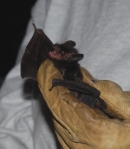
Michelle McCaulley runs the Rio Grande Basin Bat Project, which was created by her late father, Jim McCaulley. Michelle planted the idea for the project when, as she recounts on her website, In 1999, I built my parents a nursery style bat house. They installed the house beside the 1/4 acre pond on their property. Their house was occupied the very first spring with over 150 insect munching bats. The house is a successful nursery. The prosperity of this house sparked an unusual idea.
So in January of 2001, my father Jim McCaulley, drafted a preliminary plan for a pilot project to build about 30 bat houses to be installed within the Village of Corrales. The goal was to provide an natural alternative to insect control rather than spraying insecticides, while also providing additional habitat. The plan was reviewed, approved and funded by the U.S. Fish and Wildlife Services (USFWS) under the auspices of the Partners for Wildlife program.
Michelle continues the program today, a bat evangelist spreading the truth about the benefits of bats and other wildlife. Thank you, Michelle, for your dedication, energy, and passion to and for these wonderful creatures. We love them!
Read Full Post »













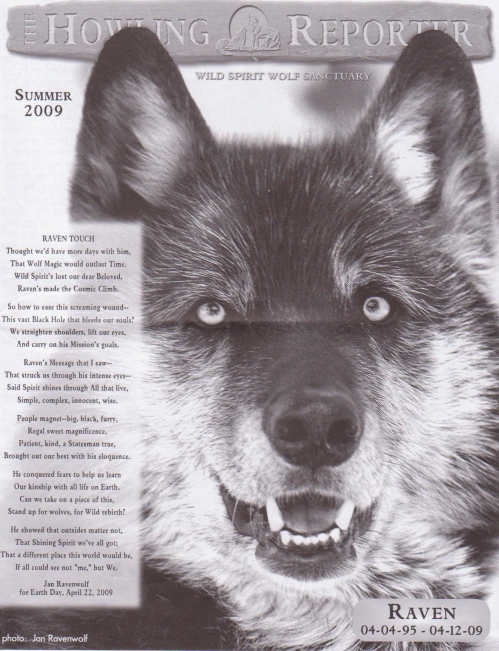
 The next day, Saturday, Jim went to Western Warehouse to buy a new pair of work boots. He saw a crowd near the entrance to the Sunflower Market next door. As he approached he suddenly noticed a big black wolf on a lead, straining through the crowd in his direction. People moved aside to let the wolf stare, like a pointing spaniel, at the thing grabbing its attention. Raven, recognizing Jim’s scent from the day before, wanted to say Hello.
The next day, Saturday, Jim went to Western Warehouse to buy a new pair of work boots. He saw a crowd near the entrance to the Sunflower Market next door. As he approached he suddenly noticed a big black wolf on a lead, straining through the crowd in his direction. People moved aside to let the wolf stare, like a pointing spaniel, at the thing grabbing its attention. Raven, recognizing Jim’s scent from the day before, wanted to say Hello.